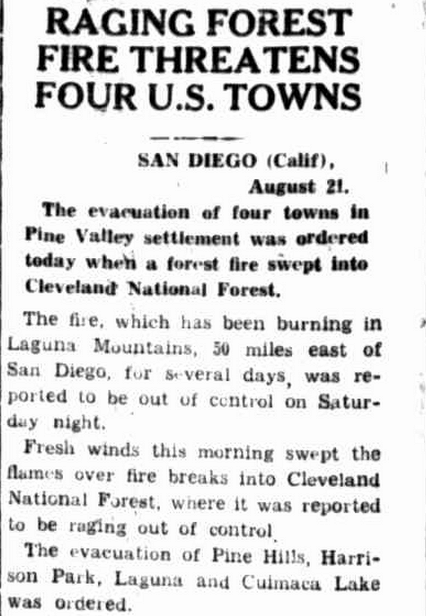22 Aug 1950 – RAGING FOREST FIRE THREATENS FOUR U.S. TOWNS SAN…
Disrupting the Borg is expensive and time consuming!
Google Search
-
Recent Posts
- Fact Checking NASA
- Fact Checking Grok
- Fact Checking The New York Times
- New Visitech Features
- Ice-Free Arctic By 2014
- Debt-Free US Treasury Forecast
- Analyzing Big City Crime (Part 2)
- Analyzing Big City Crime
- UK Migration Caused By Global Warming
- Climate Attribution In Greece
- “Brown: ’50 days to save world'”
- The Catastrophic Influence of Bovine Methane Emissions on Extraterrestrial Climate Patterns
- Posting On X
- Seventeen Years Of Fun
- The Importance Of Good Tools
- Temperature Shifts At Blue Hill, MA
- CO2²
- Time Of Observation Bias
- Climate Scamming For Profit
- Climate Scamming For Profit
- Back To The Future
- “records going back to 1961”
- Analyzing Rainfall At Asheville
- Historical Weather Analysis With Visitech
- “American Summers Are Starting to Feel Like Winter”
Recent Comments
- arn on Fact Checking NASA
- Gordon Vigurs on Fact Checking NASA
- Bob G on Fact Checking NASA
- Bob G on Fact Checking NASA
- arn on Fact Checking NASA
- conrad ziefle on Fact Checking NASA
- conrad ziefle on Fact Checking NASA
- arn on Fact Checking NASA
- Bob G on Fact Checking NASA
- Bob G on Fact Checking NASA



Those were natural fires, not like these recent ones that were set by arsonists or by CNN to boost their ratings.
Fires in those areas don’t require an arsonist even today. One of the things that truly astonishes me even today is that people think the trees and uncleared brush around them have always been there. The life cycle of the trees in those areas require the forests to burn down to make way for the next wave. In another 150 years there will be photographic evidence accumulated to show the continual cycles with Oak, Pines, Redwoods, Manzanitas, and no telling what else competing for dominance depending on the amount of moisture available during any one cycle. They either need to manage the forest with selected cutting and underbrush reduction or get used to the fires. The Lake Cuyamaca area burned in 2003 and is only just beginning to cover. A beautiful pine forest and many homes were lost.
That’s “recover” The 2003 fire burned most of the areas mentioned in the 1950 article. The area was completely reforested in the early 1990s with no trace of the 1950 fire. The temperatures in the area stay moderate year round, except for occasional snow in the Lagunas, so you only need water for rapid growth. Of course, that is in short supply right now.
When the Spaniards first came into San Fernando Valley, they already witness smog due to the smoke from the slash-n-burn practiced by the locals and the natural containment environment of the valley.